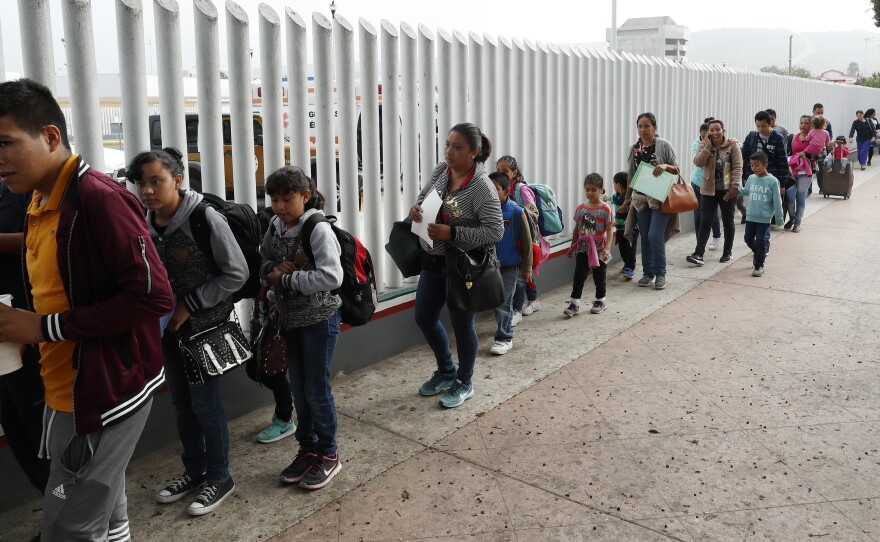Tucson-based reporter and researcher Todd Miller writes about how climate change has led to increased migration across the globe.
His new book, "Empire of Borders", looks at how the United States government has expanded its border security forces well across the globe in response to this new era of mass displacement.
He spoke to KPBS reporter Max Rivlin-Nadler this week.
Q: So what is the connection between recent migration from Central America and Climate Change?
A: I’ve talked to climate scientists that have been doing modeling in Central America, and one scientist told me that Central America is the quote-unquote “ground zero” for climate change in the Americas. The way he explained it was that there is a whole swath of territory, that goes from Guatemala to Honduras, El Salvador, Nicaragua, that’s called the dry corridor. This dry corridor is a place where there’s been less rain, rain that farmers could predict. It’s so much of a crisis that the World Food Program estimated that 1.4 million people throughout that region of the dry corridor in Central America were in a food crisis. One other thing about the “ground zero” as the Climate Scientist explained to me, it’s not just the droughts. When you think of Central America, Central America is an isthmus. And on either side of that isthmus are huge bodies of water, so gigantic storms including hurricanes, have spun off of those oceans and that also has real impact, especially the coastal areas, with flooding, landslides, and mudslides, and that sort of thing. It’s this combination of either too much rain, or no rain at all, and that’s impacting people, and one of the ways that people respond to that is by migrating north.
Q: Is Climate Change often specifically cited by the migrants that you interview, or is it more of an abstract thing?
A: Often it’s abstract. I met a young man from Guatemala, right on the U.S.-Mexico border, about a year ago. And he had walked through the desert, and his feet were just ravaged from walking, they were completely blistered, and I got to talking with him. He said he’s from this area, which is kind of near the Salvadoran border, which I knew was in that area where they’re experiencing droughts, so I asked him: Is there drought in your area? And he responded, yeah, I’m right in the dry corridor. He told me the milpas or corn-plots, the crops were wilting. His family had some cattle, the cattle were dying. They were skinny and dying. Almost always if the person is a farmer, they’re like, yeah, in the last few years, the seasons have been scrambling. We haven’t been able to rely on the rain, the soil has changed. There’s always a great amount of knowledge to what’s happening.
Q: How much has the U.S. government known about the impact that climate change would have on migration, and what steps did it take to prepare?
A: What’s interesting is how aware the Department of Homeland Security was that climate change and environmental conditions were going to impact people and perhaps be a cause of migration. What you see in DHS documents is that kind of narrative. For example, the droughts that people are experiencing in Central America. Well, you can see they discuss the droughts in Central America and how they might impact people coming North. And they say, very clearly, that they may have to prepare our borders for mass migrations.
Q: You argue in your new book that the U.S. government prepared for the impact of climate change by functionally moving the border hundreds of miles south. What does that mean?
A: Post-9/11, there has been what former Customs and Border Protection Commissioner, former DHS Assistant Secretary Alan Bersin said it has been a massive “paradigm change.” And that is the “pushing out” of the border, as some of the CBP people call it. It means extending the border, or extending what they call the “Zone of Security,” as far as you possibly can. Under the reasoning of CBP, if you push the border out as far as you can you stop unwanted people or unwanted items for coming to your country as far away from your borders as you possibly can.







